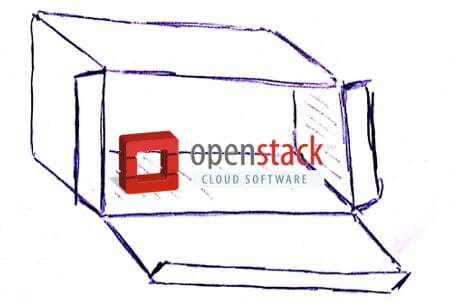There’s a new game in cloud-town, and it is called Open Stack. Well… not that new, but it is gaining momentum. Where is it going to be used the most?
While there are some definitions to OpenStack, I think the easiest one is “AWS for the rest of us”.

Amazon Web Services are the behemoth in the IaaS market. I’ve been on their mailing list for a while and it was hard to catch up with all the updates, upgrades and new services that they roll out on a weekly basis. The notion of a cloud platform that can be used to run services is a compelling one, and not only to public cloud provides like Amazon, Joyent and select others – it is also compelling for large enterprises, where a lot of varied services are used internally.
With Amazon having a huge head-start, other companies had to view Amazon’s own infrastructure as the core commodity – join forces to define and build that core together in an attempt to compete against a single large player. This last year, it seems that OpenStack has become the predominant “standard” for building IaaS.
I had an interesting meeting a few weeks ago about OpenStack. One of the people in the meeting started the introduction with the following statement:
Two years ago, the word de jour for enterprises was “Cloud”. Everyone had to have it in their brochures.
Last year? That one was all about “Big Data”.
This year, everything is “OpenStack”.
In a way, he is correct.
Cloud was all about consuming service “elsewhere”, gaining agility and bypassing the IT organization (for better and for worse). Then came Big Data, and while you do see a lot of vendors providing cloud based Big Data solutions, I believe that most large corporations are having a hard time placing their data in the hands of an external vendor in the “cloud”.
And that, along with an understanding that a cloud can bring efficiencies to an organization; and to some with an understanding that the larger your operation is, the less it makes sense to outsource it to the cloud; the need for internal IaaS solutions grew. In some areas, this is called the “Private Cloud”, and with it, came private, proprietary solutions.
But now, there’s an industry standard for it, OpenStack, which targets exactly that niche – the large corporations who wish to offer internal IaaS environments.
During that meeting I attended, it dawned on me that the name chosen for this initiative is misaligned with its message: it might be useful for AWS’s competitors, but its sweet spot is in enabling the Private Cloud.
Open. Private.
OpenStack for Closed Spaces.
–
Taken to the extreme, those public IaaS vendors? Amazon AWS, Google App Engine, Microsoft Azure – they use closed, proprietary solutions…

It’s OpenStack, because they really want to be an open standard.
Why does private cloud need to be using a standard ? It is the API again, application developers can use the same API for the private cloud as on the public cloud. This is important because it allows ‘hybrid cloud’ and ‘cloud bursting’. To move workloads on demand.
Anyway, the reason enterprises with big data don’t want to place their big-data cloud needs outside of their own datacenter isn’t so much related to that data itself, but I heared it is because they need to connect to other data sources.
Those other datasources can not be placed outside of their own datacenters, because these are the core business. It might not even be related to where the data is stored, but they don’t want to add extra links which can fail between that data and their users. Because it is their core business, they can’t function is something in between fails.